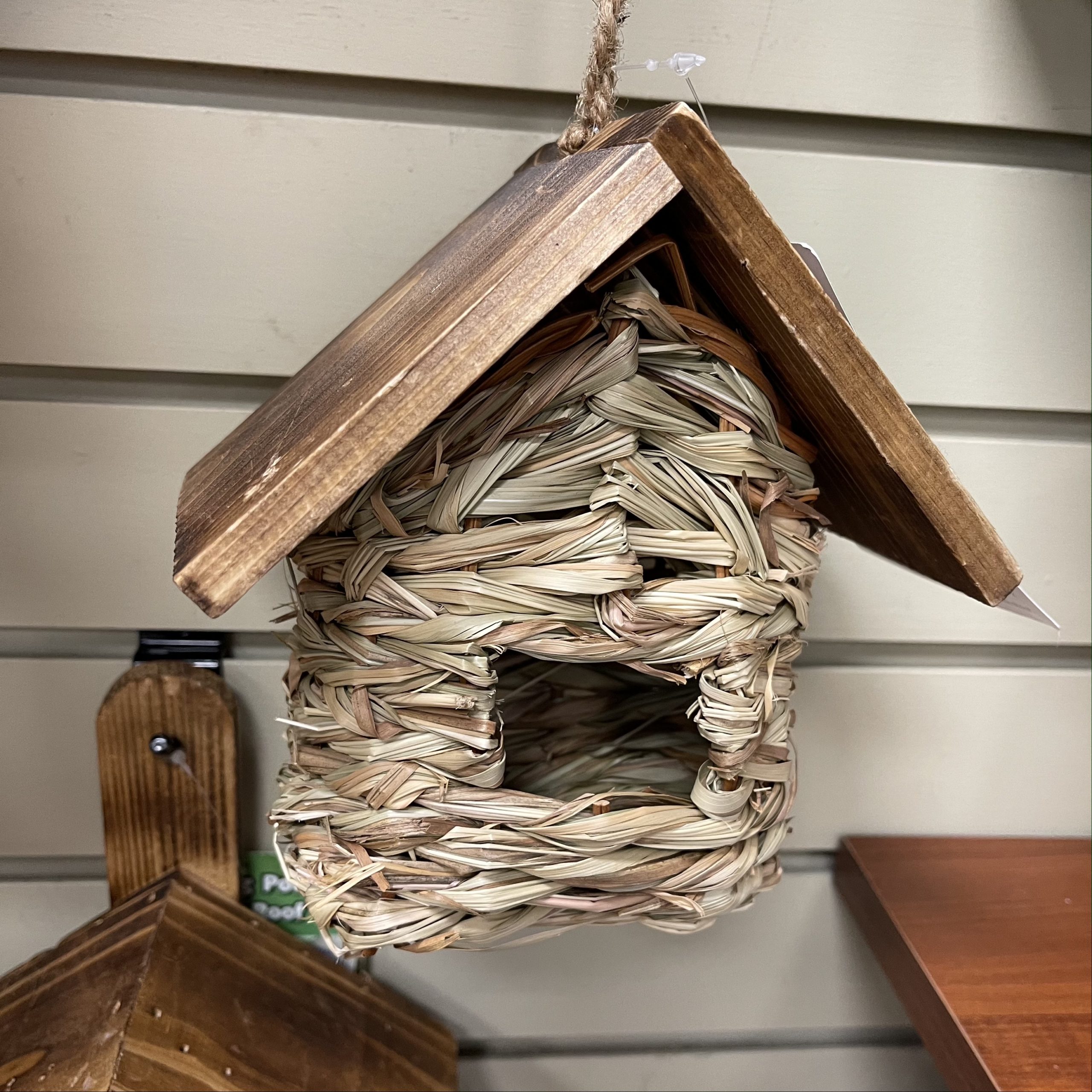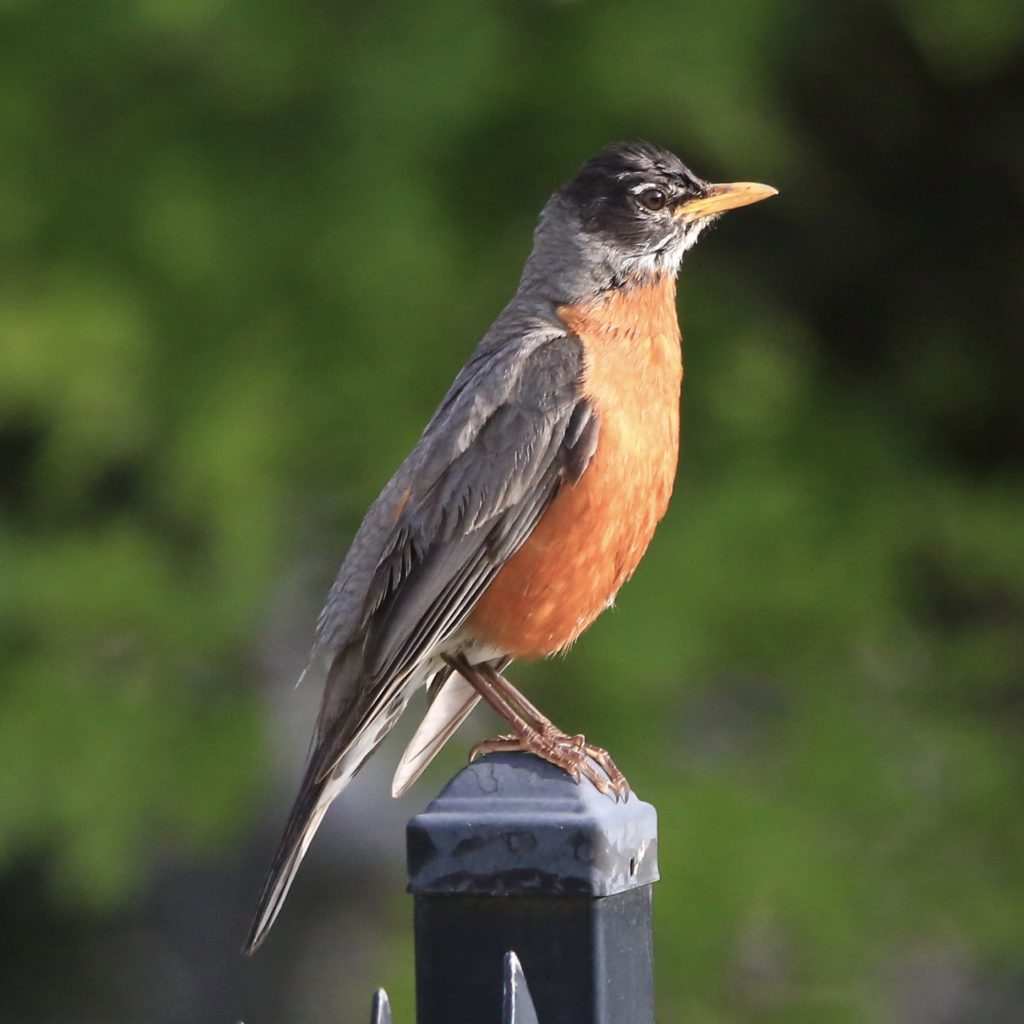
About Robins
Robin is the common name used for various birds, of which the most famous is the American Robin. Frequently considered to be the “first bird of spring,” the American Robin is one of the most well-known and familiar backyard songbirds all year long. In this article, you’ll learn how to build or buy the right Robin bird house.
With sharp colors and exciting behavior, these members of the Turdidae species are some of the most loved wild birds. They are known as the state birds of Michigan, Connecticut, and Wisconsin.
The Robin’s song is familiar to many bird watchers with its high, varied tone. A low “hip-hip-hip” call is also often used. American Robins are regular contributors to the dawn chorus in early summer and spring. Birds will sing even before sunrise as they look for mates.
They have a white chin, a black to gray head, a dull red belly and breast, and gray upperparts. Also, they possess a light yellow bill and dark eyes that have deep orbital markings surrounding them.
These are omnivorous species that consume a wide variety of foods. While Robins are favorably known for their worm-loving hunger, they also eat several other kinds of insects.
As American Robins are so common and widespread, they are not challenging to find. Look out for these birds resting and running across grassy areas such as golf courses, athletic fields, and school playgrounds.

About Robin Bird Houses
Both the female and male robins are highly territorial birds. The females even possess their own territory throughout the winter season. The Robin males usually claim their parts by singing loudly, primarily through springtime.
These songbirds prefer to stay in open areas like farms, gardens, woodlands, and meadows, but they can also reside in the bird houses of your backyards.
Robins can nest in human-made houses provided for them or even just about any suitable place they can get. They have been seen to stay in unusual areas such as cars, coat pockets, and kettles. They can even nest in a set of shoes hanging on the wall.
If you want to attract them to your garden, you can use an open-fronted nest box as they don’t like to breathe in cavities.
You can, therefore, offer them a nesting shelf where female Robins can make their nest. Be sure to add a slope and overhanging roof to secure them from the rain.
Throughout the winter, robins capture plenty of nourishment from berries, so planting trees that have berries, cherries, and crabapple will boost your garden’s attractiveness and help you attract robins.
Size Of Robin Bird Houses
Robins mostly prefer open nesting platforms compared to the enclosed ones because of the unobstructed view they offer. An excellent platform for birds should carry a base of 8 inches by 8 inches and a roof of 8-inch with an open face and open sides.
It is most suitable to install your platforms in an area fronting trees or plants or open spots on the front of sheds, for instance. Avoid setting the bird houses in trees, as predators are likely to discover them there. And besides, Robins only set their nests at the external branches of trees.
In fixing the platform for Robins, make sure to set them around 6 to 15 inches over the ground or not lower than 30 cm so that crows won’t take the opportunity to fly in and perch on the bird house.
Wood is the most comfortable material for a bird house. It is not only durable but reliable and comfortable for robins too. Please don’t use the pressure-treated wood as the chemicals applied in making them are toxic for birds. And never paint the inside of the platform.
There are many types of wood available such as redwood, cedar, pine, spruce, and poplar. They are soft to go with and long-lasting. Try to arrange a wood nearly ¾ inches thick for durability.
Robin Bird Houses Maintenance
These are some measures you can follow to support the nesting platforms or bird feeders and make your garden more Robin-friendly.
● Discard old nesting stuff from platforms before every new nesting period begins.
● Remove the old nest only with your gloves on as it may have parasites. Remove everything inside the platform into a sealable garbage bag.
● Handling birds is not advisable for pregnant women or people with inadequate immune systems. They may carry viruses, which can infect people.
● Give the nesting platform a healthy cleaning with the bleaching liquid. Make sure to reach every crevice and corner.
● Set the wooden bird houses in sunlight and let them dry for some hours to ensure no water is within. It will help limit the growth of mold and fungus.
● After it’s dry and fresh, provide it with a good inspection to ensure everything is fine during the cleaning process.
Once you’ve successfully encouraged a Robin to nest in your backyard, feel free to witness and enjoy the splendor of the growing chicks, but be careful. Male and female Robins are incredibly protective of their chicks and will not wait to swoop down at you and your pets.
Building or Buying Robin Bird Houses
Here are some of the best Robin bird house plans you can buy or build.
● Robin Platform Shelter: This Robin bird house plan by 70birds has an 8″ by 8″ base, almost an 8″ ceiling, an open face, and partially open sides. It is Made up of pine, cedar, or almost any softwood. Always practice corrosion-resistant screws and other tools.
● Duncraft Best Nesting Shelf: This perfect-looking Robin house plans by Duncraft is made up of 100% natural and durable wood. These bird house kits are one of the best gifts you can give to your kids. The house will ideally support Robins to raise their young and keep predators out.
You can also make these bird house kits for kids to spend a great time with them.
● Beautiful Dove & Robin Nesting Shelf: These nesting shelves measure 8 x 7 x 9 inches, the ideal size for
Robins, and are formed for long-lasting durability.
The angled slope of the cover will restrict the accumulation of late water or snow, so your beloved birds stay warm and have a house for protection throughout the colder months.
Robin Nests in Bird Houses
The American Robin loves habitats such as woodlands, open farmlands, meadows, and urban areas like lawns and parks. They prefer their nests in a hole in a tree stump, bank, wall, or some unusual nesting site such as coat pockets.
The Robin’s built nests shaped like cups with clay or mud mixed with leaves, roots, hair, grass, and wool. The female bird forms the nest by shaping it with her arms as she turns round and round in it. Then she lines it with delicate grass, wool, fiber, and hair.
The female lays about 3 to 5 beautiful blue-colored eggs and raises 2 to 3 broods each season. Incubation is done by the female, while both parents do the feeding of the chicks.
They will return to the same sites from season to season. Sometimes Robin makes a new nest on top of their former one. You may notice as many as three on top of one another.
Final Words
You can set goals to bird-watch for these Robins after you have placed your bird house in your backyard and record your results.









